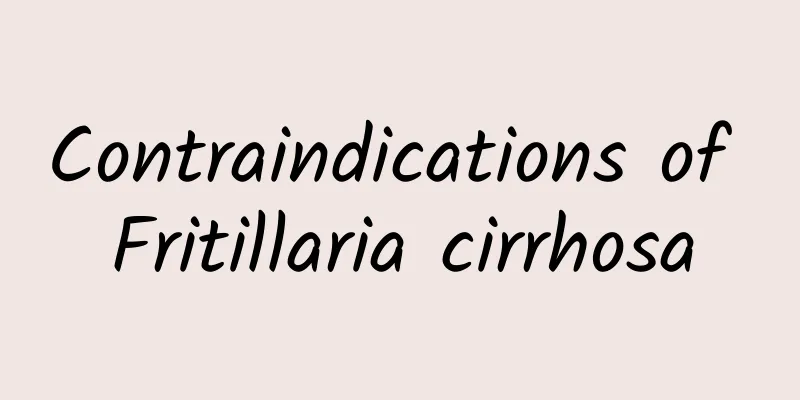The efficacy and function of bell grass

|
Traditional Chinese medicine has a history of thousands of years. It has appeared at a very early time, and it has very satisfactory effects on the treatment of diseases. There are many types of traditional Chinese medicine. Do you know the medicinal material "Cistanche deserticola"? [Other names] Maojian tea, wild potato [Source] Medicinal material source: the root or whole herb of the Lamiaceae plant, Coleus ovata. [Original form] Bell grass, perennial herb, 40-70cm tall. The fibrous roots are often tuberous and thickened, sometimes in clusters of 2-3. The stem is erect, quadrangular, pubescent or bristly. Basal leaves are ovate-triangular or triangular-lanceolate; petiole 7-13.5cm long; leaf blade 4-13.5cm long, 2.7-7cm wide, with crenate margins; stem leaves are opposite, the same shape as basal leaves, usually smaller, with stellate bristles and simple hairs on the upper side and stellate soft hairs or clustered bristles on the lower side. The cyme has many flowers, separated from each other; the bracts are linear-subulate, with spiny tips and internode hairs; the calyx is tubular, about 1.4 cm long, with internode bristles and soft hairs on the outside, with 5 round teeth at the tip, with spiny tips at the tooth ends, and soft hairs on the edges; the corolla is purple, about 2.2 cm long, lip-shaped, the upper lip is covered with star-shaped short soft hairs on the outside, with fringed edges, and the lower lip is 3-lobed, the middle lobe is larger, obovate, slightly concave at the tip, and the edges of the side lobes are irregularly serrated; there are 4 stamens, the front pair is longer, and the rear pair has appendages at the base, and the filaments are hairy; the pistil has 2 ovaries, which are fused, the style is simple, and the stigma is 2-lobed. The nutlets are ovate-triangular, with hairy tips. The flowering period is from June to August, and the fruiting period is from July to September. [Habitat distribution] Ecological environment: Growing on hillside grasslands at an altitude of 770-2200m. 【Nature and flavor】 Sweet; bitter; warm 【Functions and indications】 Dispel wind and dampness; promote blood circulation and relieve pain. Mainly used for rheumatoid arthritis; cold; traumatic injury; physical weakness and fever [Usage and Dosage] For oral use: decocted in water, 3-10g. 【Excerpt】 Chinese Materia Medica Regarding the bellflower introduced in the article, I hope everyone can learn more about the relevant information in daily life, so that you can correctly treat it when facing the trouble of the disease. |
<<: The efficacy and function of white back leaves
>>: The efficacy and function of box fruit vine
Recommend
The efficacy and function of two-color wawei
There are many kinds of common Chinese herbal med...
It’s the “sneezing” season again. What’s making me sneeze non-stop?
Spring is supposed to be a beautiful season full ...
Who shouldn’t eat Cynomorium songaricum?
When taking Chinese medicine for conditioning, th...
What are the benefits of drinking Danshen water?
Salvia miltiorrhiza is one of the most common Chi...
Chinese scientists built a neutrino telescope 3,500 meters below the sea. What can they see?
Xinhua News Agency, Shanghai, January 8 (Reporter...
The role and efficacy of Bletilla striata
For a common medicine like Bletilla striata, we s...
Effect of washing hair with water boiled with Ligustrum lucidum
Most of us may not know much about Houttuynia cor...
The efficacy and function of otter liver
Do you know what otter liver is? If you know, do ...
Can Codonopsis be eaten raw?
Codonopsis pilosula is a food with great medicina...
What is the common sense of Chinese medicine decoction?
Traditional Chinese medicine is not unfamiliar to...
Can a mistake in insulin dosage be fatal? Scientific discussion of this scene in "The Long Season"
In the first episode of the hit suspense drama &q...
The efficacy and function of Ligusticum chuanxiong
There are so many medicinal herbs in the world, a...
Effects and functions of Matsutake
Matsutake mushroom is a very good medicinal mater...
What are the medicinal properties of seabuckthorn?
When it comes to sea buckthorn, I believe many pe...
How long after giving birth can I eat angelica?
Angelica sinensis is a warming and nourishing foo...









